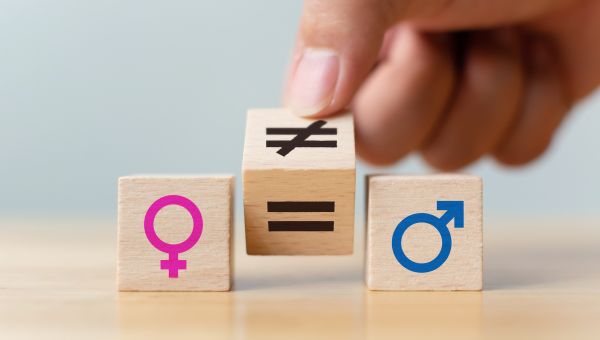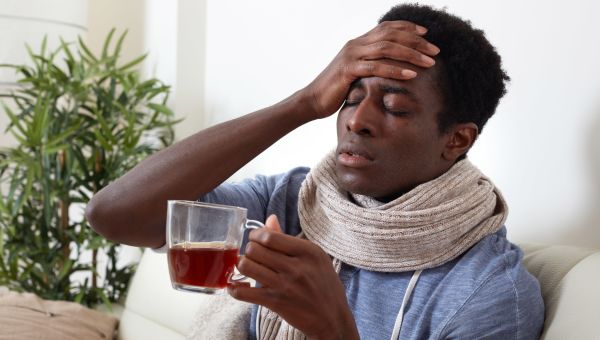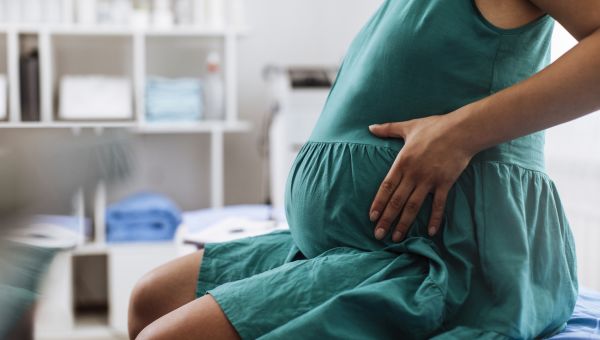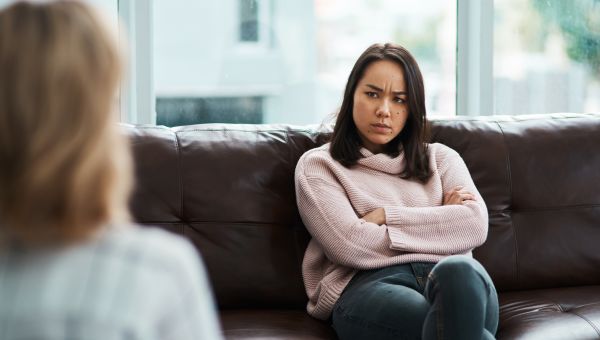5 myths and facts about gender and health
Are men more stoic? Do women tolerate pain better? Understand the facts behind gender stereotypes—and how they may affect health.
Updated on November 20, 2024

As time goes on, many outdated ideas about gender—like the notion that women can’t play sports or that men should stay out of the kitchen—have happily gone the way of beehive hairdos and Jello salads. But plenty of stereotypes about gender persist. In many cases, they can negatively influence your health, including the way you assess your risk for certain conditions or the likelihood you’ll seek and find effective medical care. Here’s how five common assumptions measure up against science.

The Stereotype: Men Are Needier When They're Sick
The science says: Respiratory infections may actually hit men harder.
You may have read headlines pondering why men seem to take getting a cold so hard or seen the portrayals on TV: Women soldiering through colds and flu to keep the office or household running while their partners lie on the couch whining when they catch the same bug. There's even a term for it: “man flu.” It might seem like something men simply use to get out of doing chores but there also could be something deeper going on.
The results of a 2010 study analyzing cells from 63 people exposed to rhinovirus (the main cause of the common cold) suggest that premenopausal women have a stronger immune response than men of the same age. The same results were not found among postmenopausal women, suggesting a link between hormones and immune response.
What's more, data collected between 1997 and 2007 suggest that American men are at a higher risk of flu-related death than women. Other research suggests that women have larger and more effective immune responses to the flu vaccine—which may lessen the severity of the flu—while men aren’t as reactive. A 2013 study published in The Proceedings of the National Academy of Sciences may explain why: Higher levels of testosterone in the bloodstream were associated with lower antibody responses to the flu shot.
Recent research has also suggested that men may experience more severe cases of and higher mortality rates from COVID-19.
More research is needed to determine whether men truly experience the flu or COVID differently. In the meantime, everyone should play it safe and get the flu shot annually and the COVID vaccine whenever the most up-to-date version is available.

The Stereotype: Women Always Have To Pee
The science says: Physiology can indeed affect the need to go.
It’s true, having a uterus and a short urethra is basically a setup for a lifetime of bathroom sprints. Why?
- The uterus puts pressure on the bladder.
- Childbirth and menopause can weaken the pelvic floor muscles, interfering with one’s ability to hold urine.
- The female urethra, which releases urine from the body, is shorter than the male’s. That puts those with shorter urethras at higher risk for urinary tract infections (UTIs)—the most common cause of frequent urination—since germs don't need to travel as far to reach the bladder.
- A woman’s anus and vagina are closer to her urethra than a man’s anus is to his. That means germs may accidentally enter the urethra when she wipes herself, causing a UTI.
Overactive bladder (OAB) affects about 40 percent of women as well. Tell your healthcare provider if you use the bathroom more than eight times daily or if you wake up multiple times nightly to pee. There’s a wide range of treatment options, including medications, physical therapy, and lifestyle changes for OAB.

The Stereotype: Men Have Better Orgasms
The science says: It may take women longer to climax, but all in all, orgasm treats everyone equally.
Climaxing regularly has a range of health benefits. It can ease anxiety, boost job performance, and encourage sleep, for example. But conventional wisdom holds that men have an easier time reaching orgasm.
When men are sexually active, it takes them about 5 to 7 minutes to climax. It takes women about 10 to 13 minutes—that is, if they reach orgasm at all. And it does seem as if men have more orgasms. According to a 2017 study published in Archives of Sexual Behavior that analyzed a sample of more than 52,000 Americans, 95 percent of heterosexual men said they usually or always orgasmed when sexually intimate compared to 89 percent of gay men, 86 percent of lesbian women, and 65 percent of heterosexual women.
Once you get there, orgasms are similar physically across genders. Research has shown that people of all genders have practically the same degree of:
- Heart rate, blood pressure, and breathing rate spikes
- Pelvic floor contractions
- Increases in oxytocin, a hormone associated with intimacy and affection
Despite physical similarities, orgasms can still feel different depending on your connection with your partner, your history with sex, and your anatomy. Orgasms from clitoral, vaginal, or anal stimulation (depending on whether you have a prostate) can feel quite different. And orgasm isn't necessary for sexual satisfaction. Not all people experience orgasm but they can still be sexually satisfied. With foreplay, practice, and communication with your partner, finding out what you enjoy can lead to substantial health benefits (not to mention fun).

The Stereotype: Women Tolerate Pain Better
The science says: It’s complicated because research suggests men and women may experience pain differently.
Many researchers have asked whether men and women experience pain the same way. But there are various ways to measure pain, and they don’t always lead to the same answer. Plus, there are differences between:
Feeling pain: Women may feel pain more acutely due to biological factors, including higher levels of the hormone estrogen, which might intensify pain, according to animal studies. On the other hand, the hormone testosterone might help buffer against pain.
Tolerating pain: When men and women are exposed to painful stimuli like needle pricks during experiments, men tend to show a higher tolerance. A large 2012 study involving over 11,000 medical records revealed women report higher scores on a scale of 0 to 10 when asked about discomfort, as well.
Expressing pain: But the “tough it out” factor may be at work here. In many cultures, men are expected to be stoic. That may be why women are more likely to seek care for pain and use more resources and coping skills to address it.

The Stereotype: Women Are More Emotional
The science says: Women have twice the lifetime risk of anxiety and depression, but men often don’t seek mental help when they need it.
“Women are emotional” is a broad statement. And having feelings is not the same as expressing them according to social norms, which makes researching this topic tricky.
When scientists measure specific emotions under controlled circumstances, men and women have more similarities than differences. When differences are found, they’re typically small.
Women do have almost twice the lifetime risk of anxiety and depression. But fewer diagnoses don’t necessarily mean men experience these conditions less often. Pressures to “man up,” or suppress their feelings, may keep men from seeking care. In fact, almost 57 percent of men who’d had direct experience with depression or suicide still said they’d be embarrassed to get help, according to a 2016 study published in Community Mental Health Journal. This, along with non-traditional symptoms like substance abuse, as well as healthcare provider bias, means men often go undiagnosed.
One possible consequence? Men are three to four times more likely to complete suicide.
If someone you know might be considering suicide, contact the 988 Suicide and Crisis Lifeline by calling or texting 988. If someone is actively considering suicide, stay with them and call 911 or take them to the nearest emergency department.

Desai S, Munshi A, Munshi D. Gender Bias in Cardiovascular Disease Prevention, Detection, and Management, with Specific Reference to Coronary Artery Disease. J Midlife Health. 2021;12(1):8-15.
Carroll ML, Yerkovich ST, Pritchard AL, Davies JM, Upham JW. Adaptive immunity to rhinoviruses: sex and age matter. Respir Res. 2010;11(1):184. Published 2010 Dec 31.
Quandelacy TM, Viboud C, Charu V, Lipsitch M, Goldstein E. Age- and sex-related risk factors for influenza-associated mortality in the United States between 1997-2007. Am J Epidemiol. 2014;179(2):156-167.
Engler RJ, Nelson MR, Klote MM, et al. Half- vs full-dose trivalent inactivated influenza vaccine (2004-2005): age, dose, and sex effects on immune responses. Arch Intern Med. 2008;168(22):2405-2414.
Sue K. The science behind "man flu". BMJ. 2017;359:j5560. Published 2017 Dec 11.
Robert H. Shmerling, MD. Is "man flu" really a thing? Harvard Health Blog. Harvard Health Publishing. February 6, 2020.
Dhindsa S, Zhang N, McPhaul MJ, et al. Association of Circulating Sex Hormones With Inflammation and Disease Severity in Patients With COVID-19. JAMA Netw Open. 2021;4(5):e2111398. Published 2021 May 3.
Furman D, Hejblum BP, Simon N, et al. Systems analysis of sex differences reveals an immunosuppressive role for testosterone in the response to influenza vaccination. Proc Natl Acad Sci U S A. 2014;111(2):869-874.
American College of Obstetricians and Gynecologists. Urinary Tract Infections (UTIs). Frequently Asked Questions. Last updated: January 2023.
Eapen RS, Radomski SB. Gender differences in overactive bladder. Can J Urol. 2016;23(Suppl 1):2-9.
Frederick DA, John HKS, Garcia JR, Lloyd EA. Differences in Orgasm Frequency Among Gay, Lesbian, Bisexual, and Heterosexual Men and Women in a U.S. National Sample. Arch Sex Behav. 2018;47(1):273-288.
Bhat GS, Shastry A. Time to Orgasm in Women in a Monogamous Stable Heterosexual Relationship. J Sex Med. 2020;17(4):749-760.
InformedHealth.org [Internet]. Cologne, Germany: Institute for Quality and Efficiency in Health Care (IQWiG); 2006-. Premature ejaculation: Overview. 2019 Sep 12.
Pool GJ, Schwegler AF, Theodore BR, Fuchs PN. Role of gender norms and group identification on hypothetical and experimental pain tolerance. Pain. 2007;129(1-2):122-129.
Fillingim RB, King CD, Ribeiro-Dasilva MC, Rahim-Williams B, Riley JL 3rd. Sex, gender, and pain: a review of recent clinical and experimental findings. J Pain. 2009;10(5):447-485.
Hunt K, Adamson J, Hewitt C, Nazareth I. Do women consult more than men? A review of gender and consultation for back pain and headache. J Health Serv Res Policy. 2011;16(2):108-117.
Oliffe JL, Ogrodniczuk JS, Gordon SJ, et al. Stigma in Male Depression and Suicide: A Canadian Sex Comparison Study. Community Ment Health J. 2016;52(3):302-310.
Centers for Disease Control and Prevention. Suicide Prevention. Disparities in Suicide. Last Reviewed: November 2, 2022.
More On


video

article

slideshow


video


video
